![]() Along with the many other recent operating system upgrades, macOS Server was quietly bumped up to version 5.4 on Sept. 25, 2017. While all of the other upgrades added new features and functionality, the macOS Server 5.4 upgrade moved some services into High Sierra and removed other functions that some organizations may find critical. Before you consider upgrading any macOS Server to High Sierra and installing version 5.4, it’s important that you know about the changes.
Along with the many other recent operating system upgrades, macOS Server was quietly bumped up to version 5.4 on Sept. 25, 2017. While all of the other upgrades added new features and functionality, the macOS Server 5.4 upgrade moved some services into High Sierra and removed other functions that some organizations may find critical. Before you consider upgrading any macOS Server to High Sierra and installing version 5.4, it’s important that you know about the changes.
File Transfer Protocol (FTP) Server
FTP has been a mainstay for moving files over the internet since the early days, but apparently Apple feels that it is too much of a security risk in the modern era. As a result, upgrading to High Sierra/macOS Server 5.4 removes FTP support.
For organizations that used FTP server as a way to upload media files or website code to a macOS Server, you’ll need to find another way of handling those transfers.
iOS File Sharing
In the previous version of macOS Server, an administrator could set up a shared repository for iOS devices. Anything placed in the repository became available to designated users, meaning that it was a useful way to share PDF files, documents, templates, and so on. In macOS Server 5.4, iOS File Sharing has removed and any iOS devices that connect to the server report that file sharing has been disabled on the server.
What can you do instead? Consider using WebDAV, or collaboration using the shared document features of Apple’s iWork suite (Pages, Numbers, and Keynote).
Services That Have Moved
As noted in the lead paragraph, Apple has moved some services out of macOS Server and into the heart of macOS High Sierra. As a result, the services are no longer found in the server dashboard. Instead, they’ve moved into System Preferences on High Sierra.
Caching Service: One of the best features of macOS Server for workgroups with many devices to update and maintain, the Caching Service makes it possible for one Mac to serve as a network cache for iCloud data, app updates, and other Apple-supplied code. By caching the information on one Mac, which then passes that information on to other devices in the workgroup, bandwidth requirements for updates are reduced.
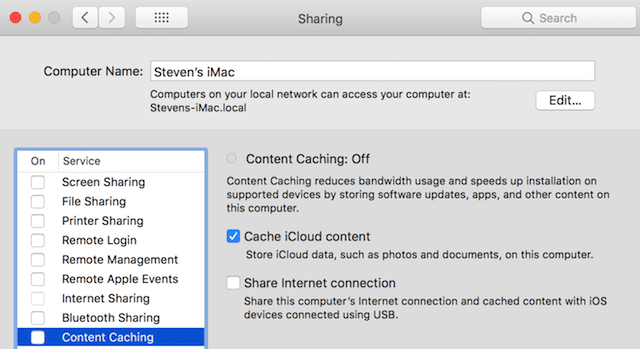
This service is now available on any macOS High Sierra machine (see screenshot above), so one Mac on a network can be identified as a caching server for the other devices on that network. To set up this up, launch System Preferences, then select Sharing > Content Caching.
File Sharing: System Preferences > Sharing is now where all file sharing is configured. While it’s possible to use both Server Message Block (SMB) and Apple Filing Protocol (AFP) to share with others, some restrictions will disable sharing over AFP your Mac is using the new Apple File System (APFS) format.
Open Directory: Apple has hidden Open Directory on macOS Server 5.4 as it is no longer required for user and group profile management.
Time Machine: To share a folder for Time Machine backups, you’re now just going to use SMB File Sharing, once again using System Preferences > Sharing to set up the shared folder. From each Mac that needs to be backed up to the server, the user simply points Time Machine to the shared folder using System Preferences > Time Machine.
Xcode Server: The functionality of Xcode server is now part of Xcode 9, with Xcode server now being deprecated.
 Why These Changes?
Why These Changes?
That’s a good question, but it’s most likely because Apple feels that the future of services lies in the Cloud, not on local servers. Over the past ten years, Apple has moved from a pricy and separate server operating system to an inexpensive app that provides server functionality. The company also stopped selling server hardware, all pointing to the eventual demise of local Mac servers.
As pointed out in several of the articles in our 2017 macOS Server tutorial, there are devices and services that provide workgroups with the functions that previously required a local server. Most of the devices and services are much more powerful (a local NAS device, for example) and less expensive (shared cloud services for collaboration), and there’s probably more of a potential revenue stream for Apple from iCloud accounts than macOS Server ever produced.
How do you feel about the changes in macOS Server 5.4? Do you feel that the days of macOS Server are numbered? Leave your comments below.
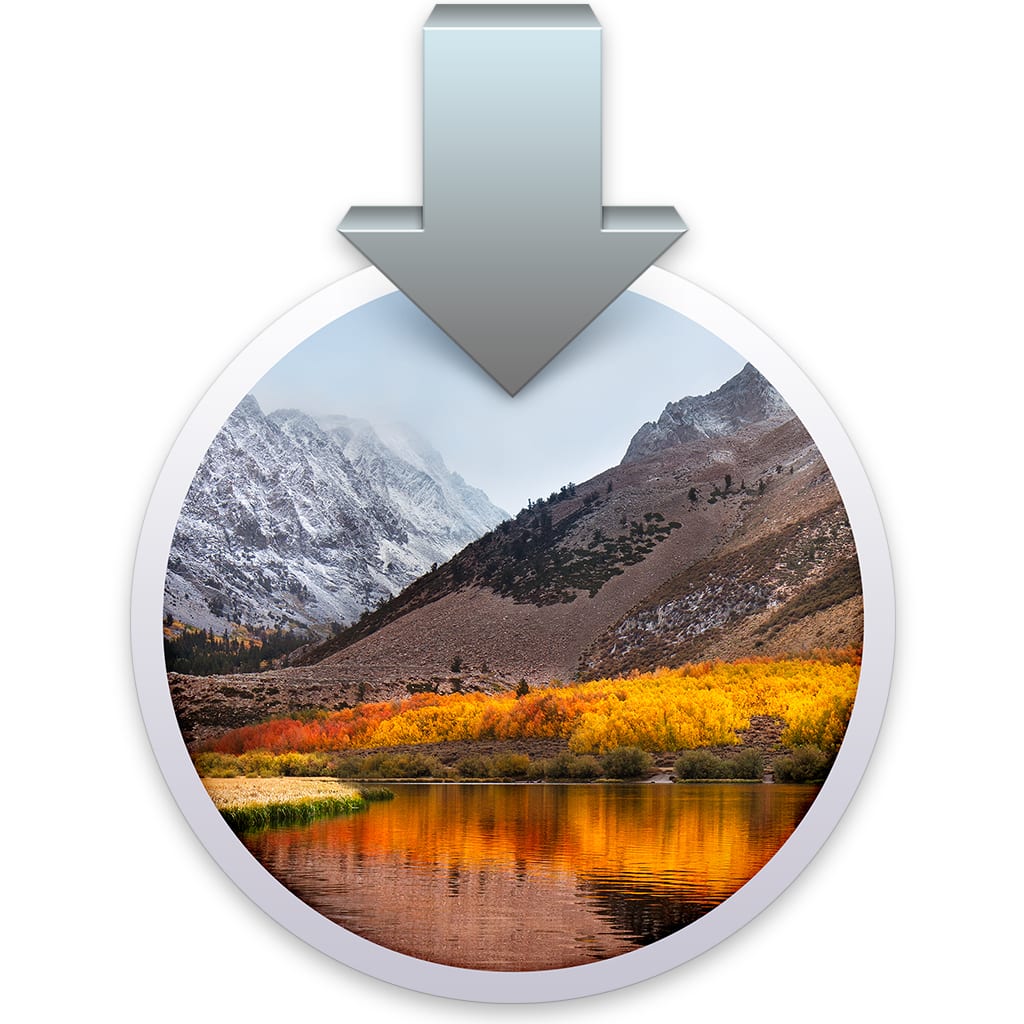
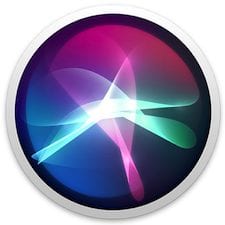
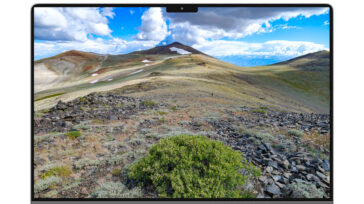


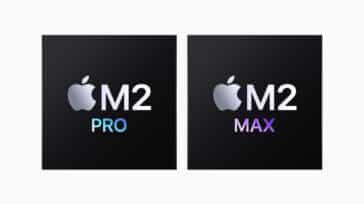


I have a Mac mini with two HDs that I once tried to use as a backup web server. Unfortunately I upgraded it to the point where I no longer use it; it’s effectively a brick. How do I get back to High Sierra and Server 5.2? Or is the path back too obscure to be followed?
Hi, Jack! Probably the best thing to do is back it up, erase the startup drive, and then try to re-install High Sierra or an earlier version of macOS. Apple has a lot of the older versions available for download: https://support.apple.com/en-us/HT211683
Then you might want to use the now outmoded but still available DiskMaker X to create a bootable installer disk. This old article shows how to do that (https://eshop.macsales.com/blog/42448-create-a-bootable-macos-high-sierra-install-drive-with-diskmaker-x-7/) and DiskMaker is still available at: https://diskmakerx.com/
That’ll give you a clean start again… the “fun” will come with trying to get all of the services re-installed and configured.
Cheers,
Steve
2021 is half way through and I’m still using High Sierra MacOS server :D
It has everything I need. I’ve added MySQL and I’ve got a fully functional web server with virtually unlimited storage that cost peanuts to run. Also email with unlimited aliases for no cost at all. I just bought a domain and use it with a free dynamic DNS :-D. Been hosting several websites, even for my clients, for at least 5 years now without much downtime.
I am dare to say they even run better than on your typical shared hosting.
Of course it takes some time to maintain and all. Also there are problems with updating tings such as PHP since the os is very outdated now. But it still works just fine!
The lack of security updates doesn’t bother you?
I am running Server 5.6.3 on High Sierra on a dedicated MacMini for my personal websites, but I am trying to understand what are the risks of not updating the OS. Besides using certificates and SSL, is a Mac of this vintage particularly vulnerable to being hacked?
I recently “upgraded” my El Capitan iMac server to High Sierra, whereupon I was informed that Server 5.2 isn’t supported, a small amount of research revealed that much of the functionality I needed was no provided on Server 5.4. I have just restored El Capitan and got Server going again, I note it will work on Sierra, however Apple lost me a couple of years ago, I will run the iMac until it dies, and my Windows 7 computers until next year when M/S stop the support, after that I am heading down the Linux road. Apple used to “just work”, but that was long ago, and I too refuse to be driven into the Cloud. We have the NBN in Australia, which is a dog’s breakfast, and I am not prepared to trust my data to an Internet based system, which for us is quite often either not working at all or runs at a snail’s pace. Apple just want to sell stuff to the mass market, and the quality they were renowned for just isn’t there any more, at least with Linux we get to control the hardware and pretty well the software as well.
I agree and have been researching NASs to replace our file server (currently a Mac mini with a Promise r8 running Sierra). Despite the lip service, I think Apple decided years ago they were getting out of the Business business. It’s a real shame. I find it troubling so many are so willing to just hand over their data to “the cloud” providers who can then set and change the terms to get to what’s ours.
Our little 5-client workgroup went through Ethernet server hell a few months ago. Slow, dropped connections, numerous calls to Apple tech support and large bills from consultants who couldn’t fix the problems. We upgraded to CAT-6 wiring and a new switch. Nothing worked. We’ve done two things that have fixed our issues: a Promise 6-bay RAID with OMC Toshiba 4TB drives and a 2018 Mac Mini just running Mojave with an i7 processor and 16GB RAM. It’s a new world here, with speeds and reliability we’ve never experienced before. Yes, expensive, but cheaper than all the hassles and slow open and saves and calls to tech support and bills from know-nothing consultants.
I feel ya man. I am also reluctant on paying for cloud services I can happily run on a computer sitting in my living room:-) With better results and lower cost.
I only use iCloud for a backup storage.
This is really simple. I did not want to “upgrade” from Snow Leopard, as my Power PC applications did all that I wanted, but eventually staying on Snow Leopard was too inconvenient and I went to El Capitain.
But I will not be forced to put data in the cloud and rely on 24/7 internet availability and trusting Apple with MY data.
I still prefer the interface design and responsiveness of Macs. Even my old 2008 Mac with 4Gb RAM, internal 500Gb SSD and a twin core processor outperforms my new-this-year and much more highly specified (8Gb, quad core, 500Gb SSD) Windows 10 laptop.
Going to Linux would be painful (finding equivalent applications) but the way Apple is going that is the likely future for my computing needs.
to get ftp back open a terminal “siri open terminal”.
once open type
brew install inetutils. My problem is that MS Word (Mac 2011) has changed all my blah.com to and the only way I can fix it is to do it one by one selecting, the turn field codes off. very annoying for a 40 pg document. Goggle is not much help on this one.
Despite Apple’s insistence on iCloud, my business clients will not permit me to use it for security reasons. I need a local server that I can contol and manage. So Apple is pushing me out of their product range to alternatives.
Well, I have spent a few hours with a clean install of HighSierra .3 and Server5.5, have not had any success getting webdav setup using wfsctl with any kind of regularity. I am going back to Sierra and SierraServer and will have to go to Linux for my clients servers when they are ready to move beyond Sierra. Of course the way things are going they may be ready to move to PC’s and give up on apple at that point.
And what about the 10 user limit file sharing ? Do I still need Server 5.4 or a Mac with just High Sierra can serve more than 10 users ?
“… Apple feels that the future of services lies in the Cloud, not on local servers” except when you’re a 60-peson firm trying to access large CAD/BIM files, point clouds, ID proposals, etc. I’m sure Apple et al would love nothing more than to be the sole repositories of our data, and maybe for personal stuff that’s fine, but businesses have an obligation to their customers to ensure their data is accessible, secure, etc. Businesses need services so we’re not beholden to Apple, Amazon, or anyone else to get to OUR information.
I feel for you folks. As an enterprise admin that has had to deal with Apple products because of demand, I can say I’ve been watching Apple punt themselves out of the business community with their methodology for over 8 years now. Its a total shame that some have developed a hate on for Windows, as they are putting out much better products than when the mac community developed its hatred. Oh well.
The issue with this, for SMBs, is that Windows Server is written with the enterprise in mind, and trying to get it to function for a smaller organization, without spending an enterprise’s IT budget, or trying to decipher from Microsoft’s thorough-to-a-fault MDSN, white papers, webinars, etc, what technologies and considerations could be safely ignored and what can’t, is the challenge. Windows does everything, but Microsoft also assumes all its customers belong to teams and whoever’s setting up the server has a week to brush up on the theory behind BetBIOS or WINS and doesn’t also have to field calls for down printers, busted mice, and general ID.10.T errors.
How about this Idea! Have Apple spin off the computer division and we all form a new company devoted to production and enhancement of products that service the business community and no mobile devices are allowed. A primary function of the company is to support small business with on site server, in house server capability, as well as cloud storage for those that want it, purely as a backup – Or does anybody do that now of which I am not aware?
^— this.
Good plan. When do we start?
I like A Zimm’s idea of starting a company devoted to business apps and integration.
Im in! :)
I have migrated most all my computing back to Linux myself (linux even supports being a time machine server so I can still backup my existing apple computers to my linux servers). I am with the rest of you, Apple is losing sight of a lot of what made them who they are and leaving us power users and administrators behind.
My internet service (Spectrum) is still too unreliable to trust consistent access to my information. With the new internet scam that the industry is trying to pull, who’s to say we’ll have affordable, fast and reliable access in the future? I know I do when the server is in the building.
As a small business that relies on Apple products, I feel like Apple cares less and less about us. There are a lot of small businesses with single one person IT departments that have used Apple for years because “it just worked.” We can’t afford large IT departments. We don’t want to switch to Windows. We feel trapped and abandoned.
Here here!
Ditto Here too.
I’ve supported small companies for a long time.
Really feel abandoned.
Tim says “Great plans for Mac Mini”. I wonder.
I have a feeling that at this point we may not see another mini until they have a new external monitor to go with it, and we may not see one of those until the Mac Pro is ready. Just a hunch that they’re not wanting to sell a new mini without a current display on the market. MAYBE.
Its all well and good throwing everything into the cloud but what happens when you lose connection or a cloud provider starts increasing its prices beyond what your prepared to pay. Then there is security, there is some stuff I have I do not want to leave in the hands of a third party. I think there will always be a place for in-house management of your data, even if you farm out some of the less confidential information to a third party. I will change my mind once I hear that third party cloud services are 100% safe, Thats never
when i think of the direction apple has been taking the past few years, and the dumbing down of the Mac OS to mobile ios, i think of the comparison of cook to apple and balmer to microsoft: both salesman at the helm.
Cook is running Apple by the 90% rule. They want iPhones, selfies, Pokemon Go, etc.
The other 10% simply don’t matter!!!
Seems like Apple is moving to a pure consumer company, looking for easy money by selling overpriced phones, forgetting who saved their life in the 90’s’: the graphic world. Still waiting for really profesional hardware and good decisions in their software,….
People really want to keep working with apple computers, please don’ t push us to WIn,….
Upgrading to High Sierra becomes moot for us. Our Mac Mini server is configured as a RAID machine. High Sierra refuses to upgrade it.
Lee, all Apple cares about is the 90% anymore. The remaining 10% simply don’t matter (Pros, business, “real” computer users).
They are moving ever more to the disposable, consumer gadget market. Just like those users, Apple is only concerned with instant gratification and not long term productivity.
I’m not having any problems being productive with my Macs.
Every single Mac I/we have bought since late 2014 we’ve suffered buyers remorse with. That said, Windows is no alternative so Linux is the only path. Hopefully I/we can find enough tools to do our jobs and move on from this love/hate cycle with Apple!
Mac OS “high” Sierra is a beta. The “Server” is a joke. The Pro user is being killed off. Its all home user rubbish, watches, phones, TV sets etc… Plan B is Linux, time for me to start switching over
Every single Mac I/we have bought since late 2014 we’ve suffered buyers remorse with. All of them high-end machines $10K MacPros, $4-5K iMacs, and $4K+ MBPs. Every single purchase pulling teeth to make OS X/macOS work as intended. That said, Windows is no alternative so Linux is the only path. Hopefully I/we can find enough tools with Linux to do our jobs and move on from this cycle with Apple!
Big problem I have after upgrading is I can no longer use High Sierra for Time Machine server for El Capitan. I cannot even use it to share files with El Capitan.
Why not?
That would be because Apple changed the file system to APFS and El Cap is not that file system.
That’s not right. First off Time Machine can’t use APFS, so any Time Machine volume you’re sharing is going to be HFS+. High Sierra only converts your boot SSD anyway.
You can’t mount an APFS drive directly to El Capitan, but you can do file sharing over SMB to your El Capitan Mac.
You have to use SMB and not AFP, but that’s been deprecated for a while now.
WebDAV is hopelessly broken in Sierra and Server 5.3.1. I tried to directly use Apache’s WebDAV, Apple has mucked with Apacahe enough that it’s dysfunctional.
OWC’s NASes are enterprise scale. For smaller scale Synology’s NASes are great. I installed one at a client, it “just works” with Snow Leopard through Sierra, and Windows 7 through 10.
Yet another move away from becoming a more consumer oriented and abandoning the enterprise world.
The “Pros” will be next on the chopping block, though probably a slower progression.
Apple would much rather have people with iPhones and Apple Watches that replace them every year or two than someone spending $3000 or more on a pro machine that wants to hang on to it for 6 or more years. And the business world is even more loathe at upgrading computers.
Is that why they’re about to release a $5K and up iMac Pro and a likely similar-priced Mac Pro in the next year or so? And a maxed out MacBook Pro runs up to $4.3K now?
I know it’s an old thread, nevertheless, new iMac is targeted for 3D artists and video game developers. It seems like Apple wants to take a percentage of VR industry. This direction is not targeted for SMBs I believe. MacBook Pro line still doesn’t have 32gb RAM model. MacPro machines are not that really popular within video industry afaik. A lot of people went to Windows(or custom Linux distros) who needed powerful video editing machines, the rest switched to iMacs.
Mac products used to be all about quality and performance. PC with Windows couldn’t keep up well with MacOS architecture. These days it’s not true anymore and Apple more known for gimmicks and shiny gadget marketing.
AFP has been deprecated for a long time now, so the move to SMB shouldn’t surprise anyone and has nothing to do with the Server app. But I’m sure the Server app is on its way out as well, so anyone who feels it’s mission critical might want to consider a plan B.
Cloud services may be the way the world is going, but until file transfers can be as fast a Gigabit Ethernet it’s a non-starter for any workgroup requiring large files: think high resolution photographs and video. And, in he future–in these days of neglected infrastructure–will the internet backbone and other services be as stable and reliable as our MacMini with a dozen hard drives housed in multi-bay enclosures whirring in the corner? Will the cost for several dozen terabytes of data storage be competitive with our server?
Even worse when you have your main clients on a 8 gbps FC network…
I have been hoping the Server app would grow to be a corporate iCloud of sorts, enabling better support for iOS clients (we have about 15 essential wired clients, and another 40 tertiary iOS clients)
Do you have to do anything on the client side to get other Macs to use the “Shared Content”?
For Caching Server? Probably not, if it works the same as the Server version did. When you’re on the same network and make a request for the same app/update/whatever, it should check the Mac registered as a caching server first automagically.
I currently run El Capitan and use FTP to transfer work files to colleagues.
Will I be able to do so if I upgrade to High Sierra?
It looks like sftp is still supported, though.
I too use the built in FTP server to transfer files to and from my *Android* devices. It makes downloading relatively painless so long as the connection doesn’t waver. Losing it means yet another unnecessary hurdle, and it makes Apple look like they’re trying to force the iOS walled garden on you for transfers since they’re slowly but surely nuking transfers to so many other platforms outside of SMB.
They’ve gone from “It just works” to “It just doesn’t work anymore”. And that isn’t even factoring in the hoops you have to jump through to avoid forced APFS conversion on SSDs.
“Along with the many other recent operating system upgrades, macOS Server was quietly bumped up to version 5.4 on Sept. 25, 2017.”
What’s particularly annoying is, after seeing all these changes, and going to the link on Apple’s developer site to version 5.3, is getting redirected to v5.4.
Complaining to Apple is useless. If you don’t already have v5.3 on all the machines you’d like, you’re not going to ever get it. Period.
This is typical bad behavior by Apple. I wonder if developer or other sorts of accounts have access to 5.3 still?